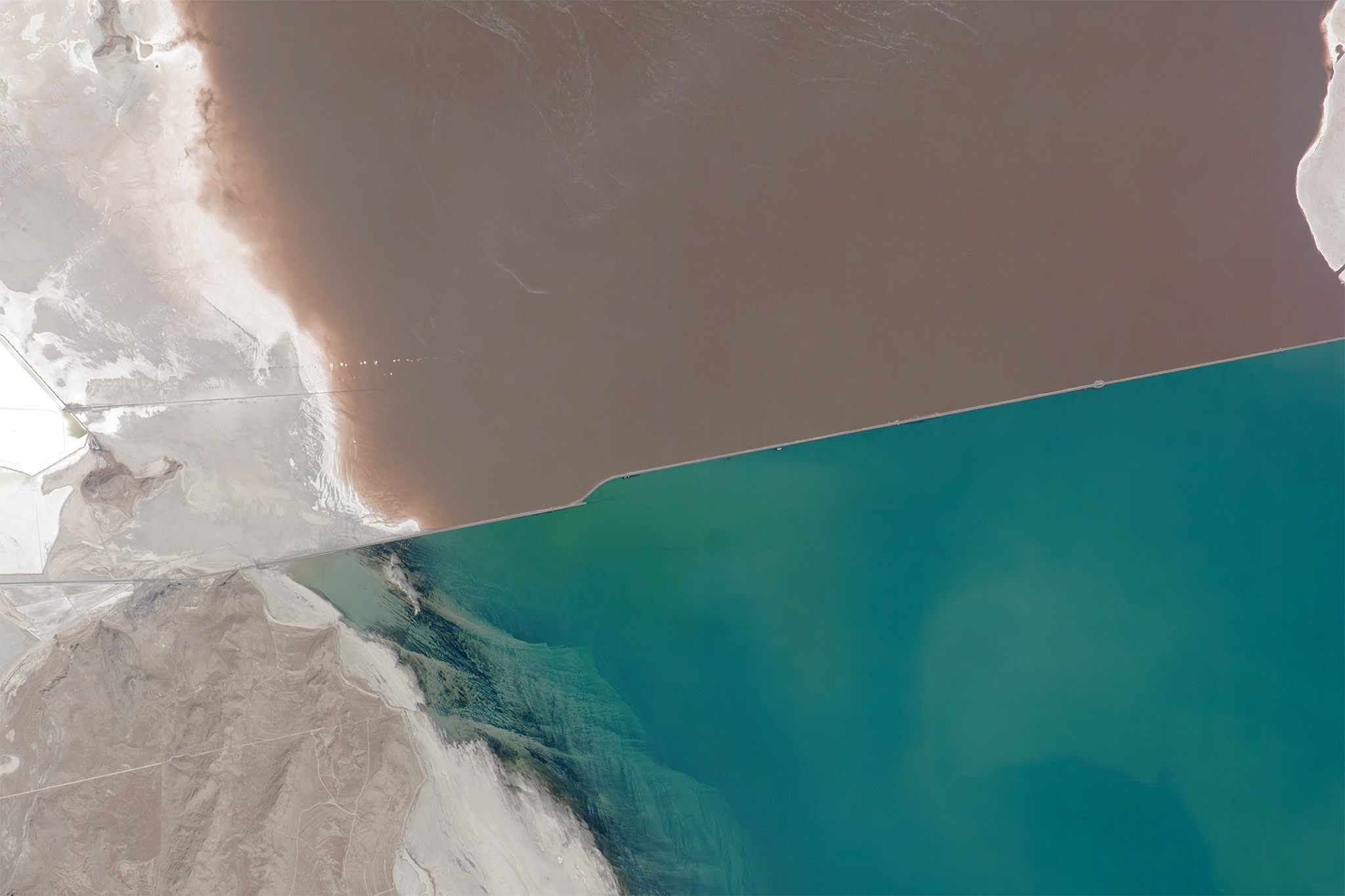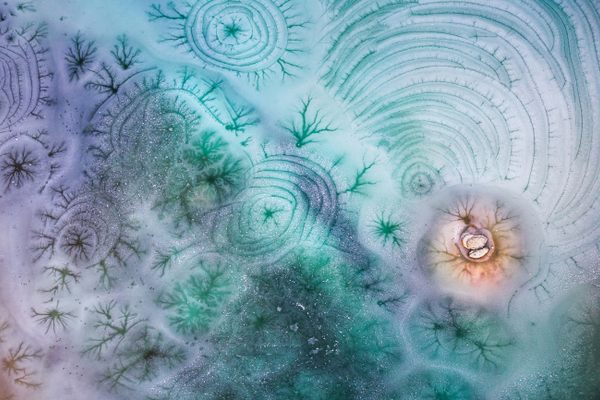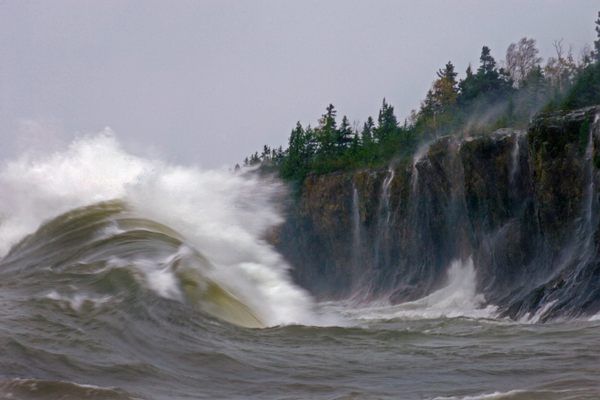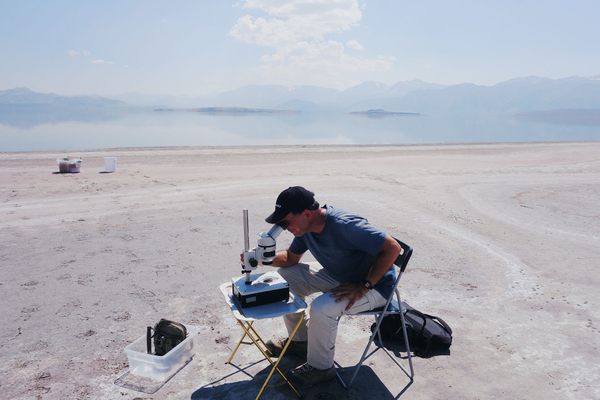The Great Salt Lake’s Mercury Mystery
A bunch of toxic mercury is suddenly missing from the bottom.

The Great Salt Lake’s water is full of salt and minerals—and a serious dose of mercury. Most of that toxic metal was deposited naturally by the atmosphere, but thanks to bacteria and an engineering project, most of it ended up concentrated at the bottom of the lake in the form of particularly nasty methylmercury. But five years after the methylmercury was first documented, it appears to be gone, without any warning or cleanup efforts. Now scientists want to know where it all went.
What they do know is how the mercury got to the bottom of the lake in the first place. Elemental mercury, the form found in older thermometers, drifts in on dust particles. It is converted to methylmercury by microbes, particularly when they’re cut off from oxygen somehow. In the Great Salt Lake, this happened when a rock-and-dirt railroad causeway was constructed across the lake in the 1950s. Rivers flow into the southern arm of the lake, diluting the salt, while the northern half of the lake is much saltier and pinker (thanks to algae). Just two culverts allowed the two sides to mix, and when the salty, dense northern water flows south, it tends to settle at the bottom.
That dense water cuts the bottom-dwelling microbes off from oxygen, which causes them to crank out the sulfide that makes the lake stink of rotten eggs—and to convert mercury to methylmercury. Scientists found high levels of methylmercury in the deep briny layer in 2010, and biologists noticed high levels of mercury in ducks on the lake around the same time.

But when scientists sampled the deep water again in 2015, they found the amount of toxic mercury had dropped by 88 percent. The mercury’s disappearance is a mystery. Scientists think the microbes might be making less, in part because the culverts were closed in 2013, but that doesn’t quite explain what happened to the methylmercury that was there before. And it also doesn’t mean the ducks are free and clear—the toxic metal is still found in carcasses on the lake’s shores. In the meantime, scientists hope the opening of a new culvert in 2016 will provide some clues in the poisonous case.



















Follow us on Twitter to get the latest on the world's hidden wonders.
Like us on Facebook to get the latest on the world's hidden wonders.
Follow us on Twitter Like us on Facebook